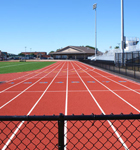At a Glance
Location
Evanston, IL
Founded
1851
Students
16,475
Specialty
Management and renovation of educational structures
With such a large campus, spread between your suburban Evanston and downtown Chicago locations, you have a lot of ground to cover to achieve your green goals. Where do you start?
Ron Nayler: We’ve been practicing sustainability for at least 15 years at Northwestern. It’s really consistent with our lifecycle costing of buildings, where we anticipate structures will last 100 years and be renovated at least three times. When we invest in something like an energy-efficient mechanical system, we expect a simple payback on that in about seven years. Right now we’re embarking on $30 million of upgrades to lighting, heating and cooling, and water-use reduction efforts within existing buildings.
You are also building several new structures, all of which will qualify for LEED Silver.
RN: We have already been certified for LEED Gold and Silver on several projects, with several more underway. Those that achieved Gold are the [renovated] Wieboldt School of Continuing Studies, the [new] Richard and Barbara Silverman Hall for Molecular Therapeutics & Diagnostics, [the renovated] Searle Hall, and [the renovated] Harris Hall. Silver certifications have gone to the [new] Ford Motor Company Engineering Design Center and [the renovated] Rogers House while applications are in development for the [new] Bienen School of Music and the [new] Visitors Center.
So essentially, you are shooting for a LEED certification on every project, whether it’s new construction or a renovation.
RN: Yes. We shoot for Gold on all projects—while Evanston has very recently amended their building code to require new construction of municipal, large commercial, and educational buildings to achieve the equivalent of LEED Silver at the minimum. The city and the university want to reduce our carbon footprint because it is the right thing to do and it is good management of our own resources. But universities should be progressive. We’re trying to stretch the minds of our students in architecture and engineering in all kinds of ways by being exemplary.

With so many people in so many buildings, energy sourcing has to be a big issue. How do you light, heat, and cool your buildings?
RN: We get 30 percent of our electricity from wind energy. As a Midwest-based school, we made the decision to source from wind. Since the 1980s, we have drawn water from Lake Michigan as a cooling source for our chilled-water condenser units, which becomes, more or less, a free source of air-conditioning in the winter, early spring, and late fall. Our new 20,000-square-foot Visitors Center will be at the periphery of the Evanston campus, so a cost-effective geothermal system is being installed there. Other buildings draw off a centralized system, which we will evaluate and improve upon as time goes on.
How do students get involved in facilities management?
RN: Formally, there is the Institute for Sustainability and Energy at Northwestern, ISEN, which was established in 2008 as an umbrella organization focused on sustainability and energy-use reduction through science, technology, education, and policy.
What about informally?
RN: They engage in all aspects of sustainability in formal and informal ways. For example, a large number of students petitioned that the Ford building, built in 2005, get solar collectors on the roof. We said if they could find the money, we would install it. They did a phenomenal job of securing gifts and grants, and the 16.8-kilowatt array was installed in 2011. That was a student idea from the start. There is also a working group of students, faculty, and administrators who look at sustainability from all angles: recycling, improving engineering efficiencies, developing related course offerings, monitoring of energy usage in residence halls—in general, [these actions] change the culture, particularly among the approximately 4,000 students who live in university housing. ABQ



